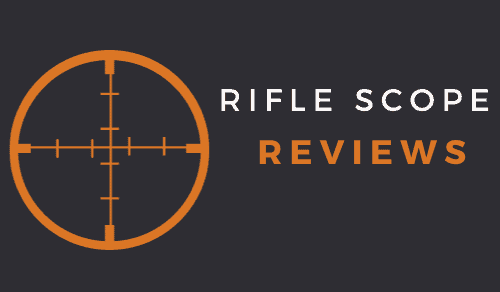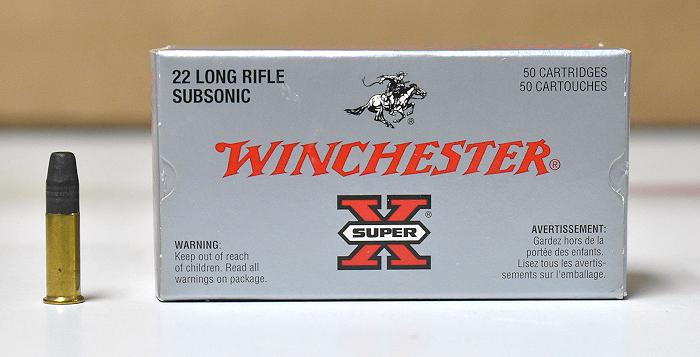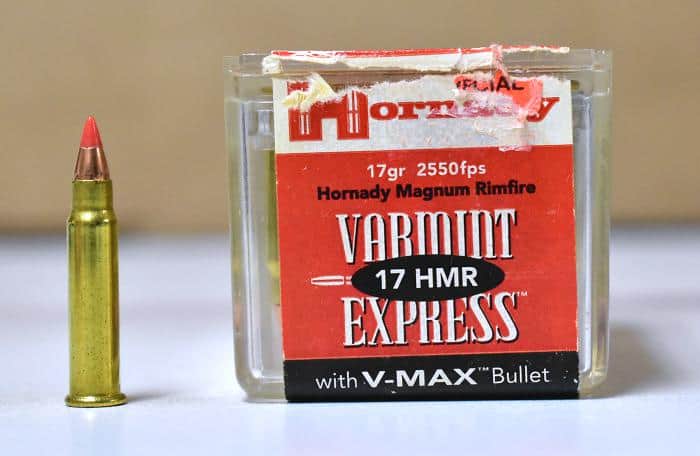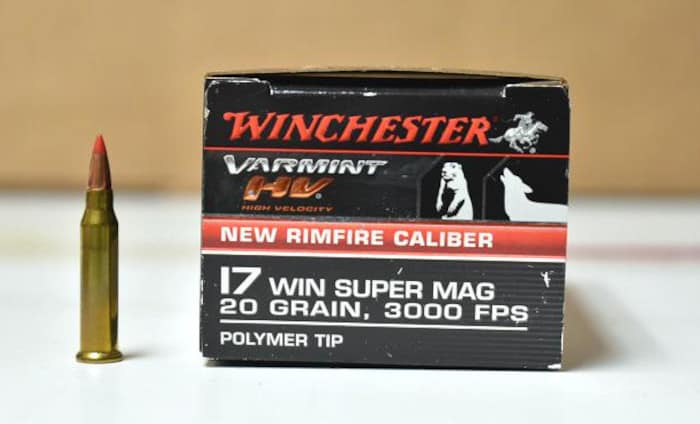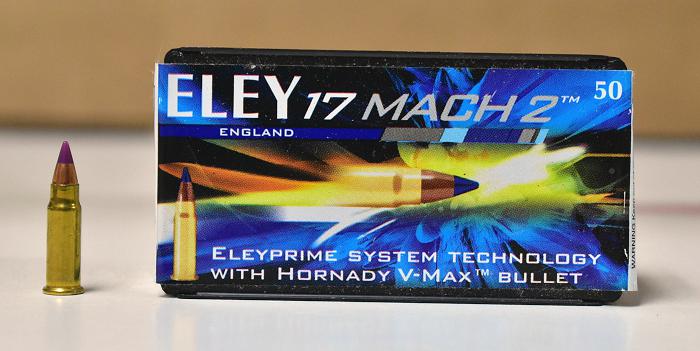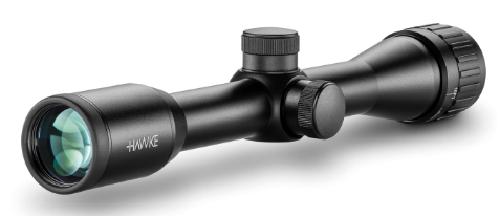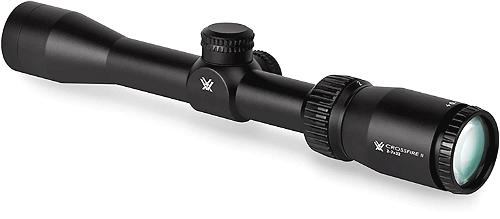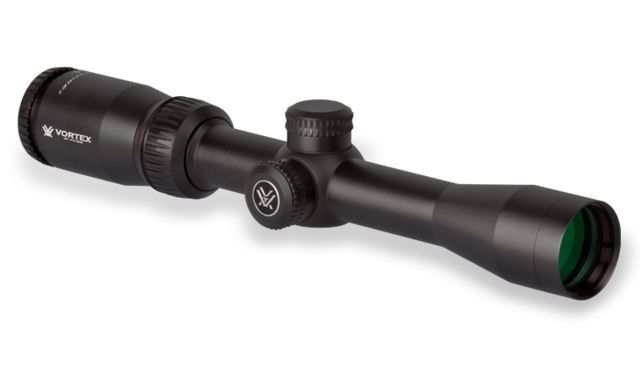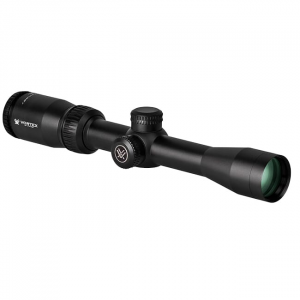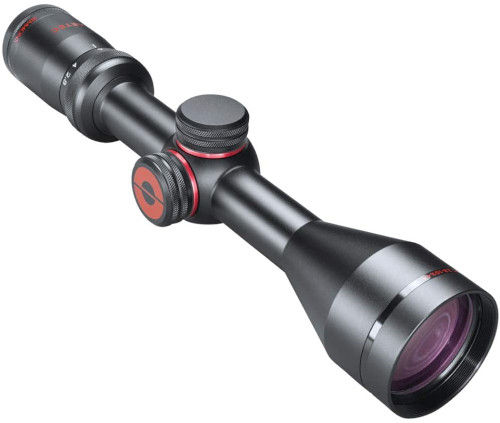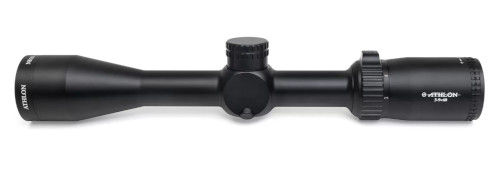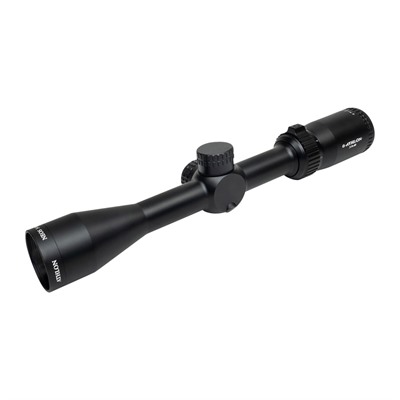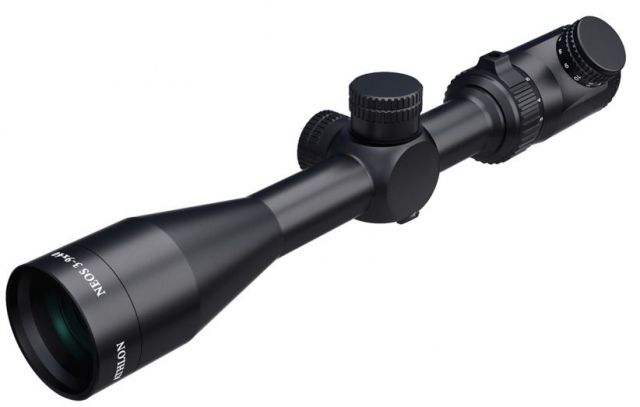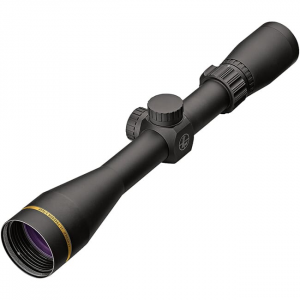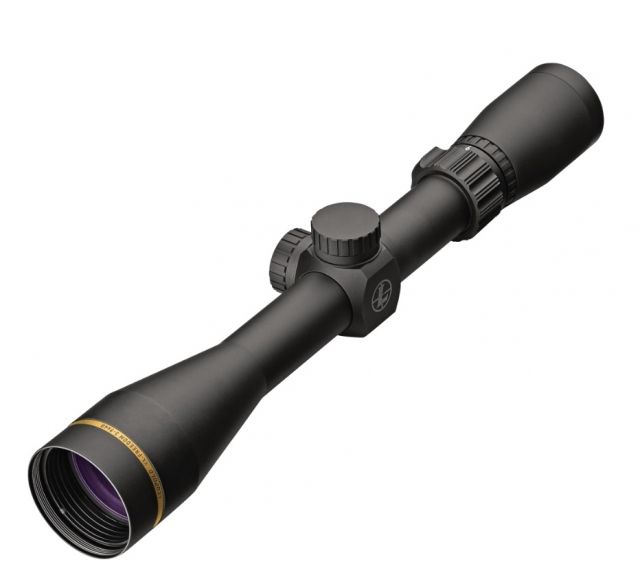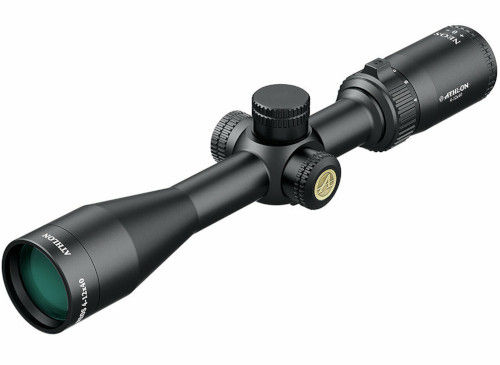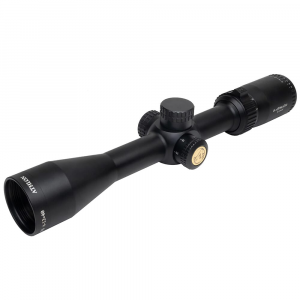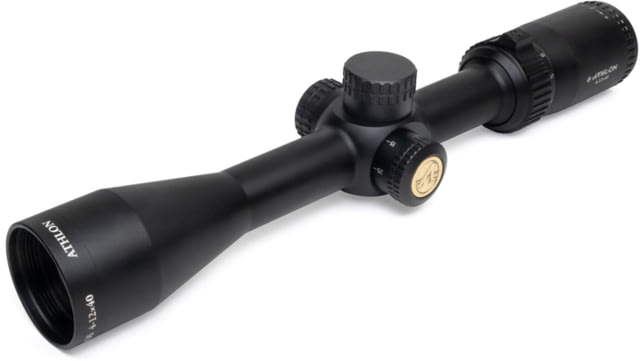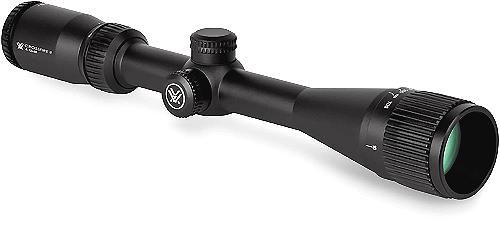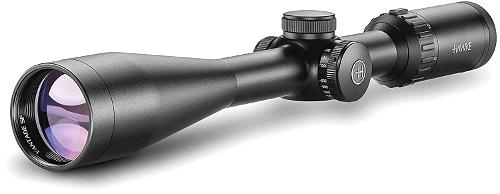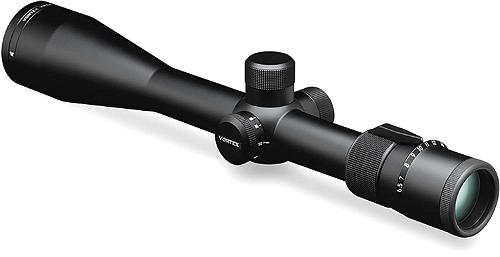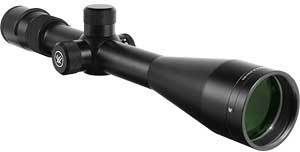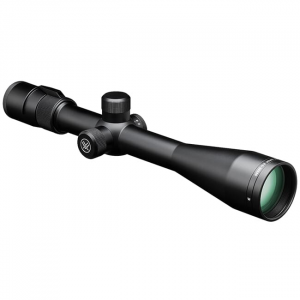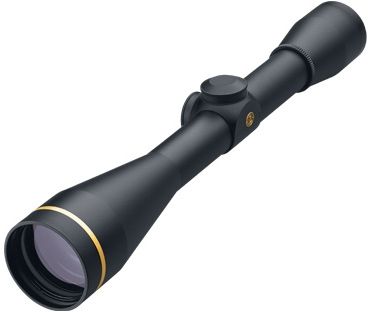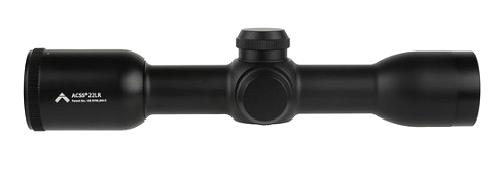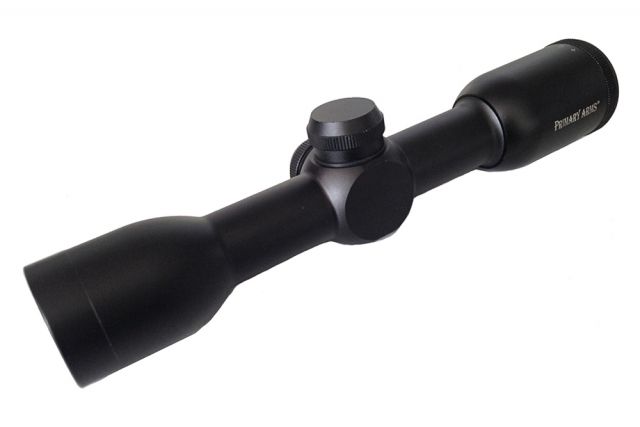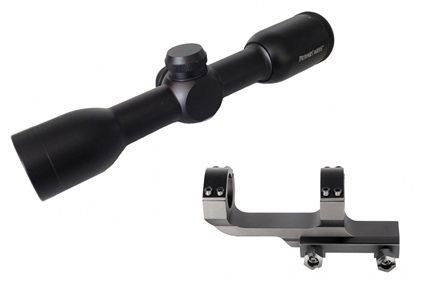As an Amazon Associate I earn from qualifying purchases. Amazon and the Amazon logo are trademarks of Amazon.com, Inc, or its affiliates.
Rimfire rifles are a lot of fun, and with the proper scope, they can be highly accurate as well. So, if you’re in the market for a new rimfire scope, you’ve come to the right place. In this blog post, I’ll be taking a look at 10 of the best rimfire scope options on the market.
Rimfires are the most popular calibers in the United States and make up a substantial share of ammunition sold in the US. These days, rimfire rifles are popular for the following types of shooting:
- Plinking
- Target shooting
- Hunting
- Competition
- Precision rimfire
For the most part, rimfire calibers are relatively inexpensive to shoot, not that loud, produce little to no recoil, and rimfire ammunition is usually readily available.
Defining a Rimfire Caliber
Before we get into the rimfire optic recommendations, it’s essential to understand and define a rimfire cartridge.
Rimfire is a term used to describe a specific type of ammunition that fires when the firing pin on the firearm impacts the rim on the base of the cartridge. This action ignites the primer, which propels the rimfire round down the firearm’s barrel.
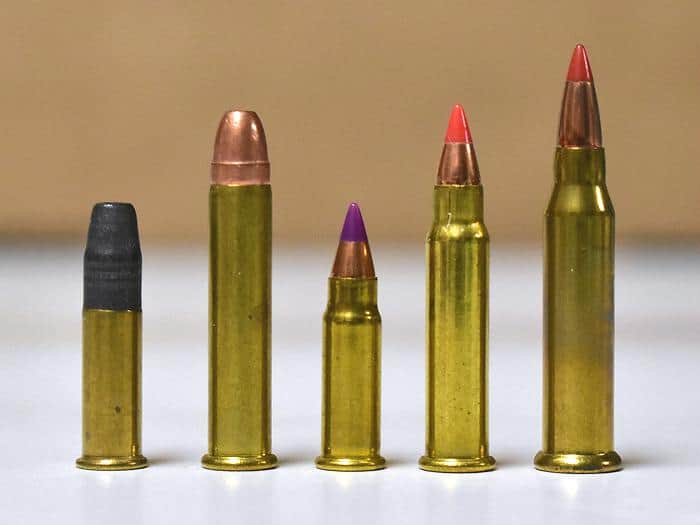
When the topic of rimfire comes up, most people immediately think of the .22 caliber, which is the most popular and well-known rimfire caliber in existence. However, a few other rimfire calibers are worth discussing as the performance of those calibers plays a role in my scope suggestions.
Keep in mind that, when discussing rimfire riflescopes, most shooters lean towards the 22 calibers, so they are shopping for a 22LR scope. However, since all the calibers listed below are rimfire calibers as well, I’m taking a more generalized approach with my scope recommendations to ensure that those scopes could potentially work with any rimfire caliber.
For the most part, five main rimfire calibers account for the bulk of all rimfire ammunition sales. These 5 are the most popular rimfire calibers, and they include the following:
- 22 LR
- 17 HMR
- 22 WMR
- 17 Mach II (17 HM2)
- 17 WSM
Let’s take a second to discuss each of these calibers in brief detail as they feature a wide variance in terms of ballistic performance.
22 LR
Without a doubt, the 22 caliber is the most popular of the rimfire cartridges and a mainstay for small game hunting, an introduction to firearms, general plinking, and even high-end precision shooting.
Invented in 1845, the .22 caliber had several variants, including the 22 Short, 22 Long, 22 Long Rifle, dedicated subsonic rounds, and dedicated hyper-sonic rounds. Of those variants, the 22 LR (for 22 Long Rifle) has become the primary rimfire caliber within the .22 caliber rimfire family.
The immense popularity of the .22 caliber means that this rimfire round also has the broadest ammunition offering. This caliber is available in a wide variety of bullet weights between 25 grains and going all the way up to 60 grains. The most popular bullet size is the 40-grain bullet configuration.
The 22 offers good ballistic performance for small game like rabbits and squirrels, but the bullet drops rapidly as it moves away from the firearm. On average, most 22 rounds have a muzzle velocity of between 1000 and 1200 feet per second, and a .22 caliber round drops 8-10 inches at 100 yards.
17 HMR
The .17 Hornady Magnum Rimfire, which is more commonly known as the 17 HMR, is less popular than the 22 but more popular than the other rimfire rounds on this list.
Introduced by Hornady ammunition in 2002, the HMR is built on a 22 Magnum case necked down to shoot a 17-caliber bullet. Depending on the grain size of the 17-caliber bullet used, the 17 HMR generates a muzzle velocity between 2600 and nearly 2800 feet per second.
With a muzzle velocity of nearly double the 22 LR, the HMR is a very flat shooting caliber with minimal bullet drop out to 100 yards. Where the 22 LR can drop 8-10 inches at 100 yards, the 17HMR drops between 1 inch to 2 inches at 100 yards (depending on various factors like bullet weight and configuration).
The 17 HMR shines as a hunting round, especially for small game and varmint species at distances over 75 yards. However, the terminal ballistics of the smaller 17 caliber rounds (which are available in 15.5, 17, and 20-grain configurations) limit the HMR to smaller-sized animals.
22 WMR
The .22 Winchester Magnum Rimfire round is next on the list and is most commonly called the 22 WMR. However, it’s also known by the following names:
- 22 Magnum
- 22 Mag
- 22 WMRF
Developed by Winchester in 1959, the 22 Magnum caliber features a longer case than the 22 LR and is available in 30, 40, 45, and 50-grain loads. Initially, the 22 WMR was only available with a 40-grain bullet, but modern ammunition makers have expanded the bullet options to include 30, 45, and 50-grain options.
The .22 Magnum was designed as a more powerful variant in the .22 caliber family that had a higher muzzle velocity, shot flatter, and had more terminal performance than the 22LR caliber.
Depending on the ammunition configuration, the average 22 Magnum features muzzle velocities anywhere from 1500 feet per second (usually the heavier 50-grain bullets) up to 2200 feet per second (usually the smaller 30-grain rounds)
With an effective range of 100 to 125 yards, the .22 WMR caliber is designed as a medium-range hunting caliber for small to medium-sized games.
On average, a 22 WMR round drops between 1.5 to 3 inches at 100 yards from a ballistic standpoint.
17 WSM
Introduced by Winchester in 2012, the .17 Winchester Super Magnum is, currently, the fastest and most powerful rimfire in production. This rimfire round was developed using a .27 caliber nail gun cartridge mated to a .17 caliber bullet. The result is a rimfire round that generates an average muzzle velocity of between 2900 and 3300 feet per second.
17 WSM ammunition is currently available in 20 grain, 25 grain, and 15-grain bullets, with the 15-grain version moving at 3300 feet per second.
This caliber offers about 150% more downrange energy than the smaller 17 HMR and is capable of shooting out to distances of 200 yards and beyond. With a rifle sighted in for 100 yards, a 20 grain 17 WSM bullet only drops 4 inches at 200 yards, making this caliber the flattest shooter of all the rimfires.
The 17WSM caliber is ideal for longer-range hunting for medium-sized varmint game species like prairie dogs, coyotes, foxes, etc.
When this round was introduced, Savage entered into a licensing arrangement with Winchester, so they were the only company licensed to build rifles in the 17 WSM caliber for five years. Today, several rifle brands offer a rifle model chambered in 17 WSM.
17 Mach II (17 HM2)
Based on the success of the 17 HMR caliber, Hornady introduced another 17 caliber rimfire cartridge in 2004 called the .17 Hornady Mach II. It’s also commonly called the 17 Mach II, 17 Mach 2, and 17HM2.
This rimfire cartridge was built on a CCI 22 Stinger case mated to a 17-caliber bullet, generating approximately 2100 feet per second muzzle velocity.
The success of the 17 HMR led Hornady to believe that a slightly smaller 17 caliber cartridge could cut into the popularity of the venerable 22 LR. The 17 HM2 rimfire round was designed primarily as a small game hunting round for those who felt that the more powerful 17 HMR caliber was overkill for small game like squirrel and rabbits due to the amount of damage done to the meat.
Ballistically speaking, a 17 Mach 2 rifle zeroed in at 50 yards will have between ½ and 1 inch of drop at 100 yards.
Unfortunately, the 17 HM2 caliber did not catch on as well as expected and is dwindling in popularity. As a result, the number of rifle makers who chamber in the Mach II is also declining.
That being said, the HM2 has a devoted following, especially among squirrel hunters, who love its flat shooting trajectory and power out to 100 yards with little to no bullet drop.
As you can see, the term “rimfire” encompasses various calibers with various levels of ballistic performance ranging from a muzzle velocity of 1000 feet per second up to a muzzle velocity of 3300 feet per second.
What is a Rimfire Scope?
Loosely defined, a rimfire scope is an optic designed specifically for use with a rimfire round or a scope built to work with a specific caliber in the rimfire family.
Scopes for rimfires are generally divided into two categories:
- General rimfire optics
- Rimfire caliber-specific scopes
While those two scope styles may sound the same, they are actually quite different so let’s discuss each one in more detail:
General Rimfire Riflescopes
The general rimfire riflescope category consists of optic models marketed as general rimfire optics and not tied to a specific rimfire cartridge.
Examples of this style of scope would be a fixed four-power scope that is labeled by the scope manufacturer as being a “rimfire” model. I would place any riflescope that has the general “rimfire” designation into this category. I’ve included a few of these general rimfire optics in my recommendations below.
Rimfire Caliber-Specific Scopes
This category comprises riflescopes manufactured for a specific rimfire caliber. Most offer some type of bullet drop compensation for the particular caliber tied to either a unique reticle or special caliber-specific turrets.
Examples of scopes that would fit into this category would be the BSA Sweet 22 scopes series (explicitly designed for use with a 22 caliber rifle) and the Bushnell A17 scope (which was designed specifically for use with the Savage A17 rifle chambered in 17 HMR).
I have also included some rimfire-based BDC scopes in my scope suggestions below.
Centerfire vs Rimfire Scopes
If or when you start shopping for a new riflescope, it won’t take long to figure out that there’s quite a bit of product overlap when it comes to scopes. By overlapping, I mean that the bulk of the scope models on the market do not differentiate or identify as being specific to a rimfire or centerfire caliber.
For the most part, rifle scopes will be loosely divided into three categories:
- Dedicated rimfire models
- Dedicated centerfire models
- Scopes that will work on both rimfire and centerfire
While there are several scope models that will fit into the rimfire only or centerfire only categories, most scope models will fall into the “both” category as they can be used on a centerfire or rimfire rifle.
However, there are some general differences that you may see between a rimfire optic and centerfire scope, including the following:
Differences in Parallax Adjustments and Settings
Most riflescopes that are geared towards rimfire calibers are manufactured with either a fixed, non-adjustable parallax configuration or a parallax adjustment that will adjust down below the 50-yard mark.
In comparison, most centerfire riflescopes will either have a fixed parallax setting that defaults at 100 yards or an adjustable parallax setting that will only focus down to 50 yards.
Differences in Reticle Options
Some dedicated rimfire riflescopes feature a specialized reticle designed to only work with certain rimfire calibers (with the 22LR being the most common). In addition, this style of scope may have a reticle with pre-configured bullet drop settings that correspond to the known bullet drop of a rimfire round at specific distances.
While these same caliber-specific BDC style reticles are also available for centerfire calibers, most scopes designed for centerfire use will feature a more generalized reticle like a duplex style reticle.
Differences in Eye Relief
In case you are not familiar, eye relief is the distance that one’s eye has to be from the scope to see a complete view of the target through the scope. Eye relief is measured in inches, and it’s an essential factor for consideration due to recoil.
All the rimfire calibers listed above have little to no felt recoil when the firearm is fired. However, centerfire calibers are a different story. Some have minimal recoil (like a .223), while others have substantial recoil (like a 338 Lapua or 300 WSM).
Suppose you mounted a dedicated scope built for a rimfire on a larger centerfire with significant recoil. In that case, the shorter eye relief on the rimfire optic may not offer enough distance to keep the riflescope from coming into contact with your face when fired.
Having the scope recoil back into your face is no fun, and take it from someone who’s experienced it. My worst experience had me looking like I’d been in a bare-knuckle boxing match and lost convincingly.
Rimfire Shooting Distances
Another factor that should play a role in the scope buying decision is the average estimated distances you plan to shoot. The potential shooting distance is important because it could play a role in the desired magnification power of the scope.
With rimfire calibers, the most common shooting distances are as follows:
- 50 Yards and Under
- 50 to 100 yards
- 100 yards and Beyond
50 Yards and Under
Most small game hunters and shooters will fall into this category because they will be shooting at game, targets, and plinking around at distances under the 50-yard mark. The bulk of the shooting will be done with a 22 LR caliber, and it’s more than capable of excellent accuracy out to 50 yards.
A lower power scope in the fixed four power or 2-7 power range is ideal with this distance. Depending on your personal preferences, you could move up to a 3-9 power scope for 22LR rifles.
50 to 100 Yards
A smaller percentage of shooters will take shots at these distances with a rimfire caliber as you have to begin compensating for bullet drop with some of the rimfire calibers (22 LR and 22 WMR). On the other hand, rimfire calibers like the 17 HMR and 17 WSM have little to no bullet drop at these distances, so they could potentially be a better choice than the classic 22 caliber.
Scopes in the 3-9, 4-12, or 4-16 power ranges are ideal for this distance, although you could undoubtedly shoot those distances with a lower-powered scope as well.
100 yards and Beyond
Shooters and hunters taking shots with a rimfire caliber at these ranges are the minority, although it’s a growing minority. As participation in precision-based 22 LR competitions like NRL and PRL continues to expand, more and more shooters are pushing the 22LR rifle (and other rimfire calibers) out to distances well beyond 100 yards.
Scopes in the higher magnification range are more common for shooting out past 100 yards with a rimfire caliber. Higher magnification includes rifle scopes in the 6-20, 6-24, and 8-32 power range.
If a 6-24 powered scope sounds like overkill on a rimfire, consider that it may be used on a 17 WSM rifle to shoot prairie dogs at 250 yards.
The choice of scope power range is unique to each individual, so my opinions on the matter are just that: opinions. My best advice is to choose a power magnification range that works for your individual needs or situation.
I’ve often discussed my vision issues on this website as a means to explain why I prefer higher-powered scopes over lower-powered models, so I’d encourage you to make your own decisions about scope magnification power.
In addition to the power magnification question, I also discuss several other features to consider when buying a good rimfire optic in a rimfire scope guide I put together down below.
10 Best Rimfire Scope Options
Here are my suggestions for 10 rimfire optics worth considering based on factors like optical quality, performance, features, and, to some degree, budget.
Let’s talk scopes:
Hawke Vantage 4×32 AO (Model 14102)
I’ve never felt that any best rimfire rifle scope list was complete without at least one fixed power scope. Unfortunately, fixed power scopes are a dying breed as most shooters prefer a variable-powered scope. However, fixed power scopes have one significant upside, and that’s simplicity. Since the power is fixed, there are hardly any knobs to turn or things to adjust.
Hawke Optics offers three different versions of their Vantage fixed four power riflescopes. One version with a duplex reticle (Model 14100), one version with a Mil-dot reticle (Model 14101), and one version with a Mil-Dot reticle and an adjustable objective (Model 14102).
While any of those models would be a good option, I prefer the 14102 model with the adjustable objective lens. The mil-dot reticle is exceptionally versatile and can be used as a duplex-style reticle, or the mil-dots can be used for bullet drop compensation. In addition, the adjustable parallax will adjust down to 5 yards, which is highly unusual for a fixed power scope.
This scope is built on a 1-inch tube and is very budget-friendly. It offers quite a bit of scope and features for the money.
| Pros | Cons |
| The adjustable objective can be beneficial in situations where the target is closer than 25 yards.
Well-built for the costs. This power range is ideal for quick target acquisition. Budget-friendly option. |
The Hawke optics brand is not as well-known as brands like Burris, Leupold, or Nikon. As a result, some potential buyers might pass on a great scope for the money.
Being a fixed 4 power scope, the magnification range is locked at 4 power, which may not be enough for some shooters. |
Here are the best prices that I could locate on this Hawke 4x powered scope:
Leupold VX-Freedom Rimfire 2-7×33 (Model 174179)
If you’re in the market for a scope made specifically for use on a rimfire, then the Leupold VX-Freedom 2-7×33 with the Rimfire MOA reticle might be worth checking out.
The 2-7 power range is ideal for short-range shooting, hunting small game, plinking, and target shooting. Leupold’s patented Rimfire MOA reticle can be used as a traditional crosshair or for bullet drop compensation at longer distances. It’s worth noting that the reticle is not caliber specific and will work with any rimfire caliber.
This model is built on a 1-inch tube and is only available in a second focal plane configuration.
Even though the VX-Freedom line of scopes is Leupold’s entry-level scope, it features good glass for the costs.
| Pros | Cons |
| Built for use on with a 22LR rimfire caliber.
Rimfire-friendly reticle that offers bullet drop compensation capability. Good quality multi coated optics for the money, with excellent light transmission for a 33mm objective. Covered by one of the better warranty programs in the scope industry. |
Comes with a fixed parallax set for 60 yards versus an adjustable parallax. That’s not a deal-breaker for me, but I’d prefer an adjustable objective.
A mid-priced option that is not exactly budget-friendly, but not an expensive scope either. |
If you think that this VX-Freedom scope might be for you, here are a few places where it is for sale:
Vortex Optics Crossfire II 2-7×32 Rimfire (Model CF2-31001R)
The Crossfire II series of scopes is one of Vortex’s entry-level scope series but offers a good value for the money. Some models in this series are built on 1-inch tubes, while a few are built on 30mm tubes.
Within the Crossfire II family of scopes, only this 2-7 Rimfire model is identified as a dedicated optic made for rimfire use. Built on a 1-inch tube, the 2-7 power range is flexible enough to cover most rimfire short to mid-range shooting situations.
This particular 2-7 model is lightweight and compact yet highly durable. The Vortex CF2-31001R scope is only available with Vortex’s V-Plex reticle (which is MOA-based).
If you’re in the market for a 2-7 powered .22 scope with a duplex-style reticle that won’t break the bank, then this Vortex rimfire scope model could be worth checking out.
| Pros | Cons |
| Compact and lightweight option for a rimfire rifle.
Covered under Vortex’s outstanding warranty program. Durable and well built. |
Comes with a fixed 50-yard parallax versus an adjustable parallax.
Would prefer a reticle with BDC capability (but I’m just being picky). |
Here are a few online vendors that seem to have the best prices on this Vortex 2-7 scope:
Simmons AETEC 2.8-10×44 (Model 5A281044)
If a 2-7 powered scope is not quite enough, but you don’t really want a 3-9 powered riflescope either, here’s an in-between option that is budget-friendly. The Simmons Aetec 2.8-10×44 offers a power range of 2.8x up to 10x and features a larger 44mm objective.
While this model isn’t marketed as a dedicated rimfire optic like some other models on this list, it performs exceptionally well for almost any rimfire shooting scenario.
This specific Simmons riflescope is built on a 1-inch tube and is a second focal model. This 2.8-10 scope is available in two different configurations from Simmons: One equipped with Simmon’s Truplex reticle and one fitted with an illuminated Truplex reticle. The illuminated reticle is an interesting option, but it also adds some weight to the scope.
Simmons is more of an entry-level, budget-oriented scope brand, and the Aetec series is their current top-of-the-line scope offering. The Aetec series offers average to above average optical quality in this price range, and I’ve found them to be quite durable over time.
| Pros | Cons |
| Better than average glass for the money.
Interesting magnification range that is slightly broader than the traditional 3-9 scopes. |
Comes with a fixed 100-yard parallax instead of an adjustable one that focuses down.
Simmons offers a decent warranty, but not as strong as brands like Vortex and Leupold. |
Here are a few locations where I found this Simmons riflescope on sale:
Athlon Neos 3-9×40 BDC 22 Rimfire Optic (Model 216003)
Next on my list is the Athlon Neos 3-9×40 BDC Rimfire scope. The Neos scopes are Athlon’s entry-level series geared towards hunting applications. While Athlon offers a few different versions of the Neos series in a 3-9 configuration, this BDC 22 Rimfire model is specifically made for the 22LR rifle.
Built on a 1-inch tube, the Neos 3-9×40 features the Athlon BDC 22 Rimfire reticle, with bullet drop compensation dot marks on the lower portion of the vertical crosshair post. This reticle is designed for use with a 22LR round with a muzzle velocity of 1250 feet per second. When zeroed at 50 yards, the BDC marks offer pre-determined bullet drop at ranges of 75, 100, 125, and 150 yards.
I’ve played around with the BDC functionality of this reticle, and it works well as long as you utilize 22LR ammunition that ends up with a velocity of 1250 feet per second. However, if you decided that you didn’t want to take advantage of the BDC option, the reticle also functions as a traditional duplex-style reticle.
The 3-9 power range is still the most popular magnification range on the market and is more than adequate for most rimfire applications.
Even though the Neos is Athlon’s entry-level series of riflescopes, the optical quality on this scope is surprisingly good for the money.
| Pros | Cons |
| The reticle offers pre-configured bullet drop compensation for the 22 LR out to distances of 150 yards.
The optical quality is surprisingly good for a sub $125 scope. Backed by a solid warranty program. The reticle design can be used as a traditional crosshair if desired. |
Taking advantage of the BDC capability requires 22 ammunition with a specific feet per second speed, so your ammunition options may be more limited.
This model is equipped with a fixed 50-yard parallax instead of an adjustable parallax option. The Athlon brand is not as well-known as brands like Burris or Leupold, which is a shame because they produce some very good riflescopes. |
If this particular Athlon scope interests you, here are a few places that I found it on sale:
Leupold VX-Freedom 3-9×40 Rimfire MOA (174181)
If you’re interested in a 3-9 scope that is built specifically for rimfire calibers versus being caliber specific, then this VX-Freedom 3-9×40 equipped with Leupold’s Rimfire MOA reticle could be a candidate for you.
This specific Leupold rimfire scope is only available in a 1-inch version with an SFP configuration. Although the VX-Freedom scopes are not equipped with Leupold’s twilight light Management System, the low light optical quality is still pretty good, and the scope is backed by Leupold’s outstanding warranty program.
The Leupold Rimfire MOA reticle offers bullet drop compensation functionality that can be configured to the shooter’s specific caliber and ammunition. In addition, the reticle features smaller hash marks on the lower vertical post that can be used for smaller targets at longer distances. While the reticle may require some range testing and configuration, it offers a tremendous amount of flexibility across all the popular rimfire calibers.
If you were not interested in the bullet drop capability, the reticle functions as a duplex as well. This particular Leupold optic is a potential candidate in the best rimfire scope for the money title.
| Pros | Cons |
| Good quality, fully multi coated lens, but they come with a higher price tag.
The reticle is usable across all rimfire calibers. The 3-9 variable magnification works well for most rimfire needs. Backed by a fabulous warranty. |
Runs on the higher end of typical pricing for a 22 scope.
Comes equipped with fixed 60-yard parallax, which isn’t bad for a rimfire scope. However, I’d prefer an adjustable parallax that would focus down under the 50-yard mark in a perfect world. The reticle requires some calibration and potential range testing to identify bullet drops. |
Here’s a list of places where I found this Leupold VX-Freedom rimfire model for sale:
Athlon Optics Neos 4-12×40 BDC Rimfire (Model 216010)
If 3-9 power doesn’t seem like enough magnification, then a 4-12 power scope could be another option. This particular version of the Athlon Neos is the same as the Neos 3-9×40 scope listed above, except for two significant differences:
- This version is available in a more powerful 4-12 power range.
- The 4-12 configuration also has a side focus parallax adjustment that will focus down to the 10-yard mark, making it ideal for almost any rimfire rifle.
The 4-12 magnification range offers quite a bit of versatility as it can be used on 4x for really close shots or powered up to 12x for longer distance shots.
Like the 3-9 model above, this 4-12 Neos scope also features the Athlon BDC Rimfire reticle with the pre-configured bullet drop points.
This version of the Neos is slightly longer and heavier than the 3-9 Neos variant, but it is still manufactured on a 1-inch tube.
| Pros | Cons |
| Side focus parallax adjusts from 10 yards to infinity (which I really like).
Specific 22 LR reticle with integrated bullet drop point built for 75, 100, 125, and 150 yards. Good optical quality for a scope priced at less than $200. |
The BDC capability only works with 22 ammunition moving at a certain speed. |
If this Neos 4-12 scope interests you, here are some places where you can get more information about purchasing one:
Vortex Optics Crossfire II 4-12×44 Dead-Hold BDC (Model CF2-31007)
If you need a good quality 22 or 17 HMR scope on a budget for short to medium-range shooting, then the Vortex Crossfire II in a 4-12×44 configuration is worth checking out.
Made with a 1-inch tube, this Vortex scope is available in two different reticle configurations:
- Dead-Hold BDC
- V-Plex
I prefer the Dead Hold BDC reticle for its flexibility capability between the two. The reticle BDC points can be configured to work with nearly any rimfire caliber, and Vortex offers an online application to help with the configuration process. That being said, I strongly recommend completing the configuration process on the range to validate the BDC accuracy at distances.
As with most scopes, the larger 4-12 magnification also adds weight and length to the scope compared to lower magnification models. However, at 18 ounces, the weight is negligible in comparison to the higher magnification range.
This Crossfire II scope also features an adjustable objective for parallax adjustments and will adjust down to the 10-yard mark.
The optical quality is on par with the other Crossfire II models and offers a good value for the costs.
| Pros | Cons |
| The adjustable objective parallax adjustment is a nice feature, and the fact that it goes down to 10 yards is even better.
The BDC-based reticle can be configured to a rimfire or used as a duplex-style reticle. Backed by Vortex’s outstanding warranty program (which some would argue is the best in the optics industry) |
This scope weighs just under 19 ounces, so it’s not heavy, but it’s not exactly light either. |
Here are some online locations that have this Vortex Crossfire II scope for sale at good prices:
Hawke Vantage SF 6-24×44 (Model 14162)
For longer-range rimfire shooting, you may prefer a scope with a higher magnification range, like a 6-20 to 6-24 model. If that’s the case, then take a look at the Hawke Vantage SF 6-24×44 scope.
Hawke Optics is based in the United Kingdom, which is why the brand isn’t as well-known as most US-based scope brands. However, Hawke is very popular in the UK and a favorite of competition shooters and air gunners.
The Vantage scope series is Hawke’s entry-level scope family for non-air gun scopes (Certain types of air guns and air rifles require specialized riflescopes). There are many scope sub-families within the Hawke Vantage family of scopes, such as side focus versions, illuminated reticle versions, 30mm versions, First Focal versions, etc. The Vantage scope model that I’m recommending here is the SF or side focus version that is a second focal plane (commonly called SFP) model built on a 1-inch tube.
This Hawke scope offers better than average optical quality for a 6-24 powered scope in the sub $350 price range. In addition, the side focus parallax adjustment is an excellent option as it will focus down to a 15-yard minimum.
From a reticle standpoint, the Vantage SF 6-24 model comes with a half mil-dot reticle, which is slightly different than a standard military-style mil-dot configuration. With a half mil-dot set-up, the mil-dots themselves are smaller than a traditional mil-dot, and they are located closer together than a conventional mil-dot.
Standard mil-dot reticles have eight mil-dot points on the horizontal and vertical reticle posts. A half mil-dot reticle has 16 half mil-dot points on the horizontal and vertical reticle posts. As a result, the half mil-dot reticles offer a more comprehensive range of hold-over points and windage points compared to a standard mil-dot.
The half mil-dots are excellent for rimfire calibers as the smaller dots won’t cover up a tiny target at longer distances.
| Pros | Cons |
| Good optical quality with better than average light transmission for a higher-powered scope in the sub $350 price range.
The 6-24 variable magnification range is easily adapted to rimfire use. Side focus that goes down to 15 yards. Half mil-dots work well for rimfire use. Relatively lightweight for a scope of this magnification. |
Pricier than some of the other scopes on this list, but not overpriced.
Basic accessories like a sunshade, covers, etc., are not included and must be purchased separately. |
If you’re in the market for one of these Hawke Vantage 6-24 scopes, then here are some locations where they are listed for sale:
Vortex Optics Viper 6.5-20×50 PA with Dead-Hold BDC (Model VPR-M-06BDC)
Another potential rimfire optic option in the higher magnification range is the Vortex Viper 6.5-20×50 PA scope with Vortex’s Dead-Hold BDC.
Almost all of the other riflescopes that I’ve discussed in this list are 1-inch models; the Viper 6.5-20×50 is a 30mm scope. The larger 30mm offers some benefits over a one-inch scope and comes with some disadvantages. The main disadvantage is the increased weight. However, this model only weighs 21.6 ounces, so it’s only about 2 ounces heavier than most of the scopes on this list.
The Viper series is a mid-grade series of scopes within the entire Vortex line, so the optical quality is better than what you’ll see on the Crossfire II and Vortex Diamondback scopes I’ve discussed previously. However, that enhanced optical quality comes with a higher price tag.
This scope model is available in two different reticle options:
- Dead-Hold BDC
- Mil-Dot
While I dearly love mil-dots, I’d suggest going with the Dead-Hold BDC as it offers the versatility of functioning as a traditional duplex-styled reticle and has bullet drop compensation options as well. Although this optic is not a dedicated 22 rimfire scope, for me, this optic wins the coveted title of best Vortex rimfire scope.
| Pros | Cons |
| Good quality glass, especially for long distance shooting.
Excellent warranty coverage. Side focus parallax adjustment. |
Weighs more than most of the other scopes on this list.
The parallax bottoms out at a 50-yard minimum, and I would prefer that it adjusted down below 50 yards. On the higher side of prices compared to the other scopes on this list. |
If you’d like more information and pricing about this Vortex Viper scope, here are some locations where it’s listed for sale:
Rimfire Riflescope Honorable Mentions
Honorable mentions are riflescope models that I strongly considered for inclusion into my top 10 list but didn’t quite make the cut for one reason or another.
Here are the scopes that I felt deserved an honorable mention:
Leupold FX-3 6×42 Wide Duplex (Model 66815)
The Leupold FX-3 6×42 is Leupold’s top-of-the-line fixed 6x powered riflescope.
It’s built on a one-inch tube and features extremely good optics for a fixed power scope. This FX-3 is a short, compact option for any rimfire shooter who wants an easy-to-operate riflescope with excellent optics.
This SFP configured scope is only available with Leupold’s Wide Duplex reticle.
Although the fixed power scopes are slowly disappearing in favor of more adjustable powered riflescopes, there’s still a subset of hunters who want a scope that is easy to use without having to turn dials or adjust the focus. Fixed power riflescopes meet that need.
| Pros | Cons |
| Excellent optical quality for a fixed power scope.
Easy to use. Just point and shoot. Features a wide field of view. |
The cost. This is not a cheap or inexpensive scope for a rimfire rifle.
This model comes equipped with a fixed 150-yard parallax setting, which isn’t ideal for a rimfire caliber but is doable. |
Here are the best prices that I could find on this Leupold FX-3 riflescope:
Primary Arms Classic 6×32 ACSS-22LR (Model PA6xX2-22LR)
The Primary Arms 6×32 scope is a fixed 6x power riflescope specifically built for use with a 22LR.
It’s one of the few fixed power scope models on the market that offers BDC capability for a 22LR. This Classic 6×32 scope is equipped with the patented Primary Arms ACSS-22LR reticle, which is made exclusively for the 22LR caliber.
Even though this scope is manufactured for Primary Arms in China, the optical quality on this model is very good for a scope costing less than $125.00.
| Pros | Cons |
| Built like a tank and covered by a lifetime warranty.
ACSS reticle is built for 22 caliber BDC drops and works well. Clear glass for a scope at this price point. |
Surprisingly heavy for a fixed 6x scope.
Specifically geared to the 22LR caliber. Fixed 50-yard parallax. |
Here are the best prices I could find online for this Primary Arms 22LR scope:
Rimfire Scope Guide
Given the overall popularity of rimfire calibers (especially the 22 LR), it’s no surprise that there are many riflescope options on the market made specifically for use with a rimfire.
The sheer number of scopes coupled with all the different options can make the buying process challenging.
Here’s a guide covering some of the more essential points for choosing a new rimfire rifle scope.
Parallax Adjustments
Parallax is a potential rifle scope issue that occurs when the target and scope reticle are on different planes inside the scope. This situation causes the reticle to shift around the target, especially when the shooter adjusts their head or moves.
While parallax correction is not required for a riflescope to perform correctly, it is a nice feature as it aids in image quality and target identification.
Riflescopes have one of two parallax correction approaches:
- Fixed Parallax
- Adjustable Parallax
Let’s take a closer look at each type of parallax correction:
Fixed Parallax
A fixed (as in non-adjustable) parallax is factory set at a specific distance. This approach isn’t perfect but offers some parallax correction level around the particular distance of the fixed parallax. The most common distances for a fixed parallax setting are 100 yards and 50 yards.
Adjustable Parallax
Scopes equipped with an adjustable parallax offer parallax correction that can be adjusted to specific, preset distances. The adjustable parallax feature allows the shooter or hunter to minimize the parallax based on the distance to the target. For example, when shooting at a target 50 yards, you can set the parallax to 50 yards to reduce the parallax effect.
Adjustable parallax is typically offered in two versions:
Adjustable Objective
The adjustable objective feature is an adjustable ring built into the riflescope’s ocular bell. The ring has distances marked off for specific parallax reduction or correction at particular distances in yards.
The adjustable objective feature tends to be more common on budget scopes now than higher-end scopes.
Side Focus
Side focus is a parallax and focus correction feature built into the scope at the turret locations. It generally consists of a marked dial that is adjusted to specific distances for parallax correction and focus. For example, when shooting at a 50-yard target, you would change the side focus to 50 yards.
While I like both adjustable parallax options, I prefer side focus over adjustable objective because I find side focus to be more ergonomic and easier to adjust without coming out of the optic.
Reticle Options
If you are scope shopping, it’s not going to take you long to figure out that there are a wide, wide variety of different reticle options on the market today. Some are mission-specific or shooting discipline-specific, while others offer more versatility.
The trick is to choose a reticle option that does the following:
- Works for your specific rimfire needs
- Is easy to understand and use
If you’re a hunter, a duplex-style reticle is kind of an industry default, but there are several other styles on the market that can extend your shooting ranges or enhance your rimfire shooting.
While I grew up on a duplex-style reticle, these days, I prefer a reticle with bullet drop compensation capability. Most of my rimfire rifles (regardless of rimfire caliber) are equipped with a scope featuring a reticle with some form of BDC-based reticle or a reticle that has some form of BDC capability.
Granted, a BDC reticle takes some configuration and may have a learning curve, but I find them to be extremely helpful for longer-range rimfire shooting.
That being said, there’s absolutely nothing wrong with a duplex-style reticle, and that reticle style is still the top-selling reticle for a reason.
Magnification Power
The ideal magnification power or scope power range is a widely debated topic within the rimfire community. The general opinion seems to be that the lower magnification ranges are a better rimfire choice than the higher power ranges.
However, I don’t adhere to that opinion as I prefer to choose a riflescope power range based on the specific shooting application or how the rimfire rifle will be used. For example, a 17 HMR rifle that is going to be used for hunting Ground Squirrels at longer ranges will need a higher magnification scope than a 22 LR rifle that will be used for general plinking.
If I had to recommend a single scope power that is broad enough to work for “most” rimfire needs, I’d suggest a 3-9 power. Note that the 3-9 power range is still the most popular and most common magnification range in the United States, but this range is also highly versatile.
If you want a compact and lightweight 22 rifle scope, then the 2-7 power range may be a good option for you.
If you’re stretching a rimfire caliber out to longer distances (over 100 yards), then I’d lean towards a scope in the 4-12 and up power range.
1 Inch Tube vs 30mm Tube
The tube size is a measurement of the tube width, most riflescopes on the market come in one of three potential tube sizes:
- 1-inch tube
- 30mm tube
- 34mm tube
The 1 inch and 30mm tubes are the most common size available today, while the 34mm tubes are typically used for high-end, long-range scopes or high-end tactical/precision riflescopes. It’s also worth noting that the 34mm scopes will require 34mm scope rings, which tend to be harder to locate, and more expensive compared to the 1 inch and 30mm rings.
Either a 1 inch or 30mm scope would potentially be a good option for a rimfire rifle, but the smaller 1-inch models are more common on rimfire calibers, especially for a 22 LR caliber.
My rimfire rifles wear a mix of 1 inch and 30mm scope models, although I lean more towards higher magnification powers (due to my preferred type of rimfire shooting and hunting), so I own more 30mm models versus 1-inch models.
For most shooters, a 1-inch tube is ideal for a rimfire rifle.
Optical Quality
“Optical quality” is a fancy word to describe the quality of the lenses used in the scope. The optical quality or glass quality is purely subjective since it’s based on one’s opinion.
I do my best to evaluate glass quality based on factors like clarity, brightness, and color. For me, clarity and brightness are more important than color.
Generally speaking, glass quality is somewhat tied to the cost of the scope. For this reason, it’s essential to have a realistic expectation of optical quality regarding the price of the riflescope. For example, it’s unrealistic to expect a $200 scope to have the same optical quality as a $2000 scope.
I try to rate the optical quality based on brightness, clarity, and color in association with the scope price range.
Most of the scopes I’ve suggested above have decent or better than average optical quality for the price. I’m a bit of a stickler about glass quality, so I don’t generally suggest or recommend a scope with poor- or low-quality optics.
Scope size and weight
Scope size and weight are always a tricky topic since there are specific situations where a shooter or hunter may be concerned about the scope’s weight and other shooting situations where they won’t.
For example, a hunter buying a .22LR optic for squirrel hunting will probably be more concerned with the scope weight than a rimfire target or benchrest shooter (although certain rimfire competition shooting disciplines may have a rifle/scope weight limit).
I generally look at the type of shooting I’ll be doing and then decide if scope weight is a part of the buying decision. For example, I prefer a scope that weighs less than 20 ounces for hunting rifle scopes, but that’s just my personal preference.
The weight is less relevant for me in the buying decision for rimfire target shooting or rimfire bench shooting.
FAQS
Here are some commonly asked questions that I routinely see regarding rimfire optics:
What is an adjustable objective rimfire scope?
An adjustable objective rimfire model is a scope built specifically for rimfire calibers equipped with an adjustable objective for parallax adjustments.
The adjustable objective is built into the ocular bell of the scope and marked in incremental yardage measurements. By turning the adjustable objective dial to the target’s specific distance, most potential parallax issues are corrected.
What’s the best rimfire riflescope available?
The answer is entirely subjective and depends on the type or style of rimfire shooting that you’ll be doing. And, by subjective, I mean that ten rimfire shooters asked to identify the best rimfire optic on the market will potentially get you ten different suggestions for the best 22LR scopes.
My recommendation is to identify the type of shooting you’ll be doing and then try to identify a rimfire riflescope for your needs within your budget.
Is there a reason that you did not list the Nikon Prostaff rimfire scope in your list? Do you have a problem with Nikon scopes?
I have no issue with Nikon scopes, and the reason that I did not list any Nikon rimfire optics in my scope recommendations above because Nikon is no longer producing riflescopes. Therefore, in my mind, it doesn’t make sense to suggest a Nikon scope that is no longer in production.
That being said, when Nikon was still offering riflescopes, I always liked their dedicated rimfire riflescope models.
Can you recommend a good mil dot rimfire scope?
There are several good-quality 22 scopes on the market with a mil-dot reticle. My favorite models are the Hawke 4×32 AO scope and the Hawke Vantage SF 6-24×44. Both of those scopes are ideal for a rimfire caliber, and both are available with a mil-dot or half mil-dot reticle option.
What is a rimfire scope?
A rimfire scope is a type of optic designed specifically for use with rimfire calibers. Most rimfire optics are clearly marked as being designed for use with a 22 Lr or other rimfire caliber.
What features should I consider before buying a rimfire scope?
When purchasing a scope for a .22 or .17HMR, you should consider factors such as the reticle type, magnification range, parallax adjustment, and overall build quality.
What is a dedicated rimfire scope?
A dedicated rimfire scope is a scope that is specifically designed and calibrated for use with rimfire rifles. It typically has features like a BDC (bullet drop compensation) reticle tuned for rimfire cartridges.
What are windage and elevation adjustments in a rimfire optic?
Windage and elevation adjustments in a rimfire riflescope allow you to fine-tune the point of impact of your rounds by compensating for factors like wind drift and bullet drop at different distances.
Can I use a rimfire scope for long range shooting?
Although rimfire rifles and scopes are generally designed for shorter-range shooting, some models offer enough magnification and features to be effective at longer distances, although they may not be suitable for extreme long-range shooting.
What’s the best .22 rifle scope?
Honestly, its really hard to pick just one single scope and call it the “best” for a 22 rifle because that’s an extremely general question with no details. For example, are you a squirrel hunter and looking for the best rimfire scope for squirrel hunting or a recommended scope for long distance competitions? Those are two very different uses so a single scope probably won’t be able to do both of those specific shooting activities very well. Without additional details, an accurate recommendation is nearly impossible.
Hopefully, you found this article helpful as you shop for a new rimfire riflescope, and I’ll update it as I come across new questions or new information.
I’ve been working in the firearms and sporting optics industry for over 20 years, with a personal and professional interest in all things related to rifle scopes, Through a combination of work experience, formal training, and personal experiences, I have extensive experience mounting, testing, and evaluating different rifle scope models across most major optical brands.
